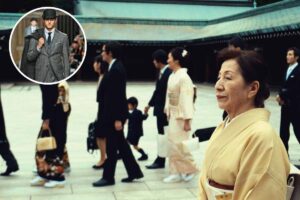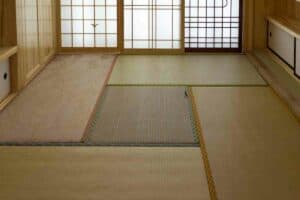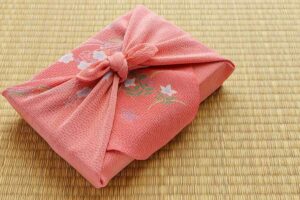The Hakama is a traditional garment in Japan. It is designed to be pants that look like a skirt and it is commonly worn on top of a Kimono.
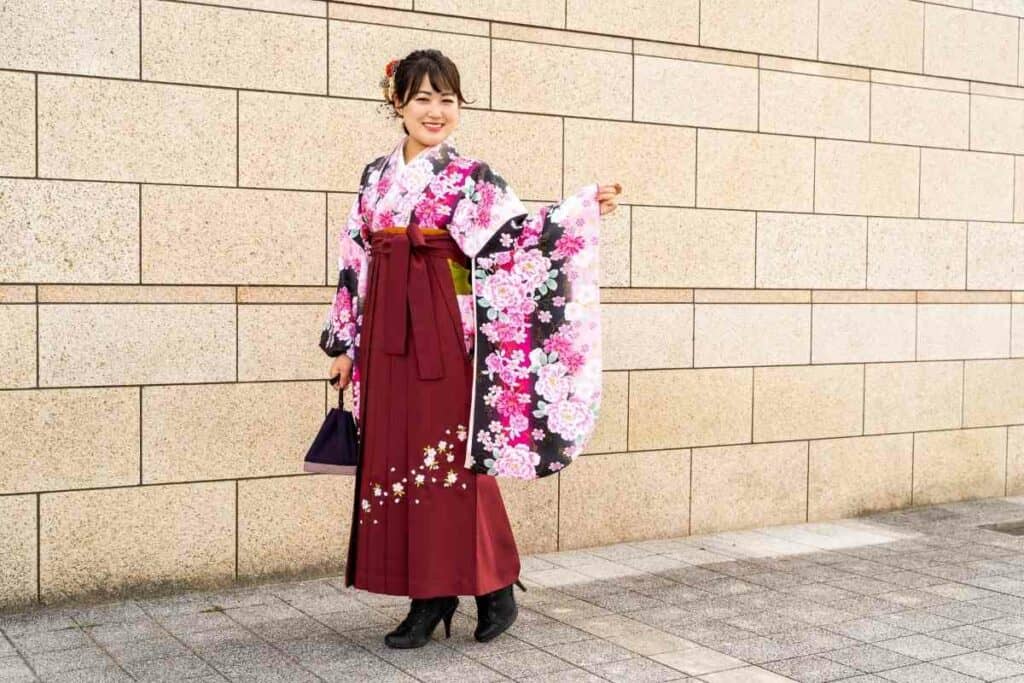
Traditionally, it was the Samurai warriors and other nobles who would have worn Hakama during Feudal Japan, but these became the most common type of lower garment to be worn between the 16th and 18th centuries.
Nowadays – The Hakama is not very popular as an item of clothing and it is mostly worn as a uniform item for martial arts like Kendo, Karate, Judo, and Aikido.
Table of Contents
What does a Hakama look like?
If you’ve come across this term and are unsure what it looks like, there are lots of things to it.
These pants have seven wide pleats. You’ll find five of these at the front and two at the back.
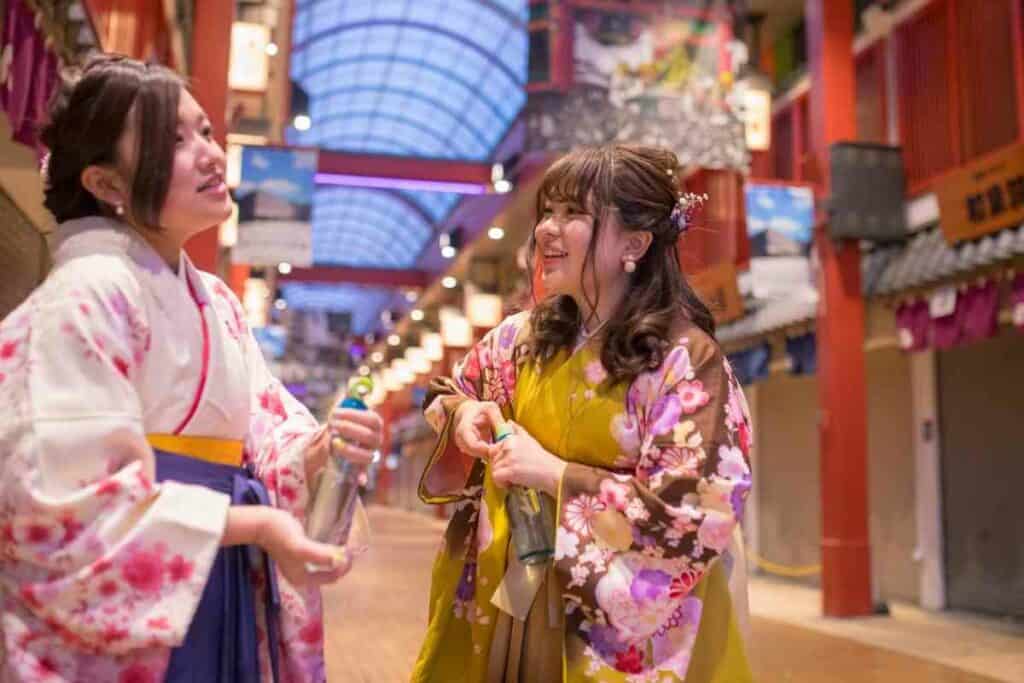
The pleats do seem balanced but they’re actually asymmetrical and you’ll find two on the left and three on the right).
There is a backrest called a Koshi ita, that is put around the lumber area. This is rigid and has four straps to tighten it. You’ll find one strap on each side, one at the back, and one at the front.
In Terms of Material – You’ll find Hakama made from Tetron (a lightweight, durable fabric made from 35% rayon and 65% polyester). This is an elegant fabric that is matte in texture. It can be washed easily in a washing machine.
There are also Hakama made from polyester. This is thicker and softer than a tetron Hakama.
Finally, you can find Hakama made with Shoaizome Coton.
This is one of the most popular materials for making a Hakama. Cotton is antibacterial and doesn’t hold onto odors.
Typically, Hakamas are dark colors, but you’ll find the following combinations:
- Aikido – dark blue or black
- Laido – white or black
- Kyudo – dark blue or black
- Kendo – dark blue
How did the Hakama design come about?
Many people believe that the Hakama is supposed to hide a person’s feet and their movements.
However, the Hakama actually originated to protect riders’ legs against shrubs – similar to cowboy pants.
Booking.comHow to find the right size Hakama
Before knowing how to put on Hakama, you need to have the right size.
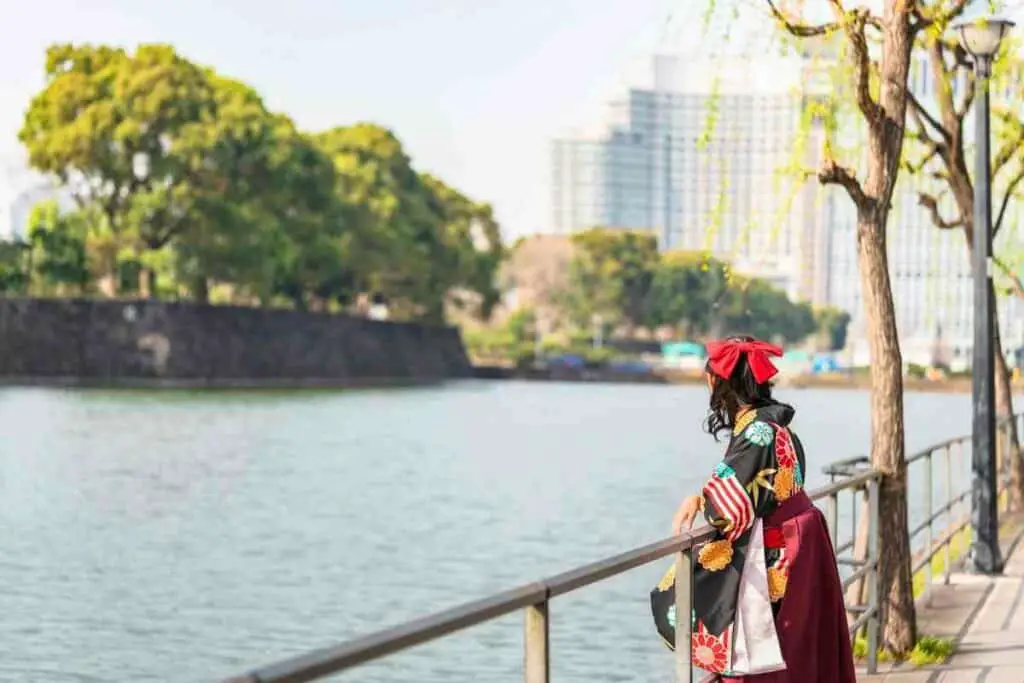
Here are some things to pay attention to when choosing your Hakama:
- Measure the distance from the floor to your navel – you’ll need someone to help with this.
- Try on some Hakama for size.
- For beginners in Kendo, it’s best to choose a shorter garment to make sure you can walk safely and move easily.
- If you’re male and have an average abdominal diameter, you should wear the Hakama at the abdomen level at the upper edge.
- For bigger waist sizes, where it below the navel (which means you’ll need it to be shorter)
When looking at it from the front, you should have the Hakama’s lower edge an inch or so from the floor so that it still covers your feet.
If you’re just beginning in a martial art that requires a Hakama, it’s best to wear it higher above your navel at first to prevent trips and falls.
The same goes for children who grow quickly. It might even be possible to rent or buy these second-hand to avoid repeat purchases.
How to put on Hakama
Now onto how to put on your Hakama.
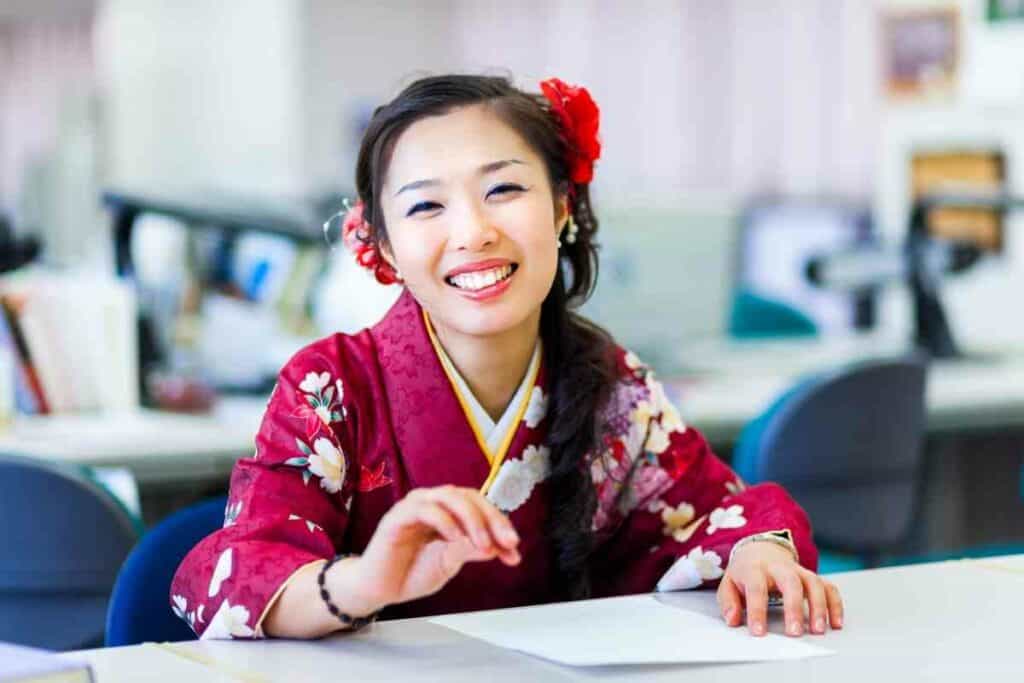
This will be different for each person but there is a basic principle to follow.
Here are the instructions:
- Place your legs through the pants and rest the front section of the Obi knot
- Pull the string past the hips and to the front then overlap it again over the Obi.
- Take this overlapped string and put it around the hips again before bringing it forward. Ensure that the string doesn’t get twisted during this.
- Once at the front, add some tension and tie off as you would the Obi. You can leave any leftover string dangling, or you can put it through the wrapped string to tidy it away.
- Next, put the backrest over the hip so it’s over the Obi and bring forward the string. After putting the string through, tie it again below the previous knot and you’re done.
Folding away your Hakama
As the Hakama is an essential item for your martial art, it’s important to look after it properly.
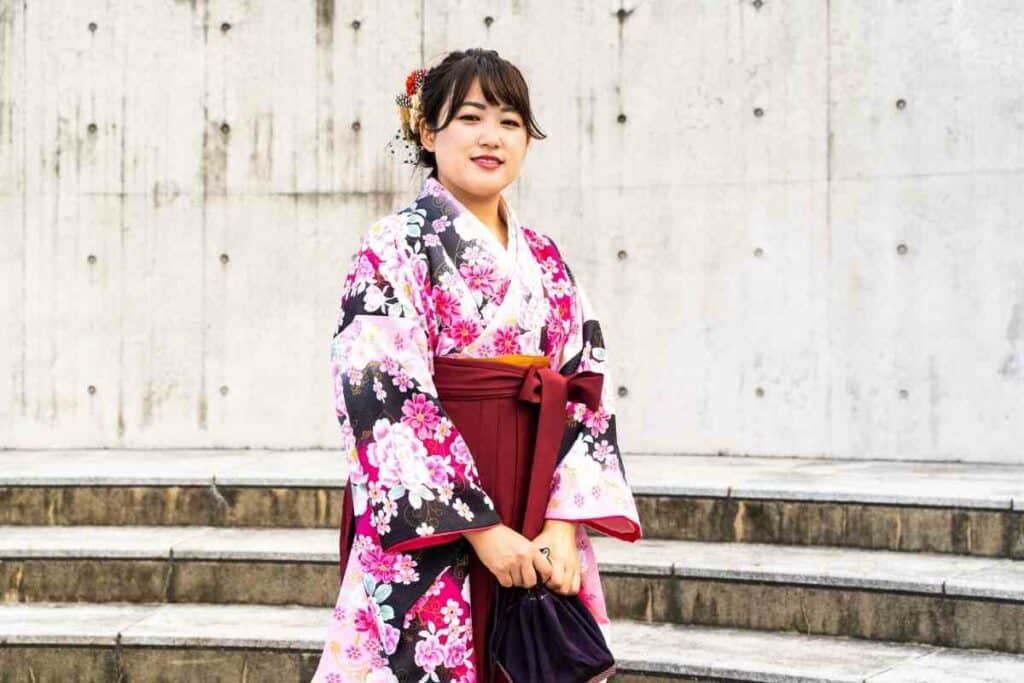
This means you need to fold it in a certain way. There are lots of ways to fold Hakama.
Here is one easy way:
- Lay your Hakama on the front. When you do this, use one hand to hold the hemline. This will keep the creases in the front of the Hakama nice and neat. For now, simply leave the back and front belts to one side.
- Smooth out the inside creases at the back, working your way to the one on the outside. The seams at the side of your Hakama will form an outer edge.
- Next, lay your Hakama on the back. When you do this, keep secure the back creases at the hem as you’ve already smoothed these out.
- Then, smooth out the inner edges from the inside creases towards the outside. The seams will be the outer edges once again.
- Next, put the longer front belts on top of one another and smoothen them out. Then, to this with the shorter back belts.
- Bring the outer edges towards the middle. Smooth them out so that the Hakama belts are covered and enclosed.
- Take the bottom third and fold upwards to the middle. Repeat the same step with the top third.
- You should now be able to fold your Hakama into a small rectangle ready for storing.
Final thoughts on how to put on hakama
You need to know a lot more about the hakama before you put it on.
Making sure it’s the correct size for your body is essential and you’ll often need someone else to help you work this out.
Once you have a Hakama that fits correctly, it’s time to get practicing fastening it with the steps above.
After a few goes, you’ll be putting it on without a second thought.
Don’t forget though, always look after your Hakama and fold it away properly to keep it looking its best!
In Case You Missed It
- Best Japanese Knives Top Picks for Every Kitchen
- Japan’s Bold New Trend: Dressing Like a British Gentleman (or at Least Trying)
- 7 Best Japanese Sunscreen Products You Can Buy Online
- 5 Best Japanese Makeup Brushes for a Flawless Finish
- 7 Benefits Of Tatami Mats You Should Know
- The Best Furoshiki Wrapping Cloths: Inspiration, Ideas & Cloths You Can Buy


